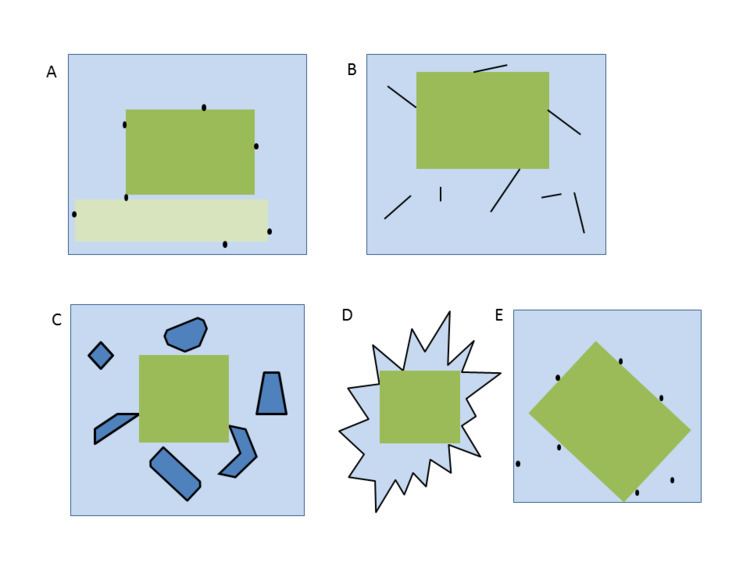 | ||
In computational geometry, the largest empty rectangle problem, maximal empty rectangle problem or maximum empty rectangle problem, is the problem of finding a rectangle of maximal size to be placed among obstacles in the plane. There are a number of variants of the problem, depending on the particularities of this generic formulation, in particular, depending on the measure of the "size", domain (type of obstacles), and the orientation of the rectangle.
Contents
- Classification
- Maximum area square
- Domain rectangle containing points
- Domain line segment obstacles
- Higher dimensions
- References
The problems of this kind arise e.g., in electronic design automation, in design and verification of physical layout of integrated circuits.
A maximal empty rectangle (MER) is a rectangle which is not contained in another empty rectangle. Each side of a MER abuts an obstacle (otherwise the side may be shifted outwards, increasing the empty rectangle). An application of this kind is enumeration of "maximal white rectangles" in image segmentation R&D of image processing and pattern recognition. In the contexts of many algorithms for largest empty rectangles, "maximal empty rectangles" are candidate solutions to be considered by the algorithm, since it is easily proven that, e.g., a maximum-area empty rectangle is a maximal empty rectangle.
Classification
In terms of size measure, the two most common cases are the largest-area empty rectangle and largest-perimeter empty rectangle.
Another major classification is whether the rectangle is sought among axis-oriented or arbitrarily oriented rectangles.
Maximum-area square
The case when the sought rectangle is an axis-oriented square may be treated using Voronoi diagrams in
Domain: rectangle containing points
A problem first discused by Naamad, Lee and Hsu in 1983 is stated as follows: given a rectangle A containing n points, find a largest-area rectangle with sides parallel to those of A which lies within A and does not contain any of the given points. Naamad, Lee and Hsu presented an algorithm of time complexity
Domain: line segment obstacles
The problem of empty isothetic rectangles among isothetic line segments was first considered in 1990. Later a more general problem of empty isothetic rectangles among non-isothetic obstacles was considered.
Higher dimensions
In 3-dimensional space, algorithms are known for finding a largest maximal empty isothetic cuboid problem, as well as for enumeration of all maximal isothetic empty cuboids.
